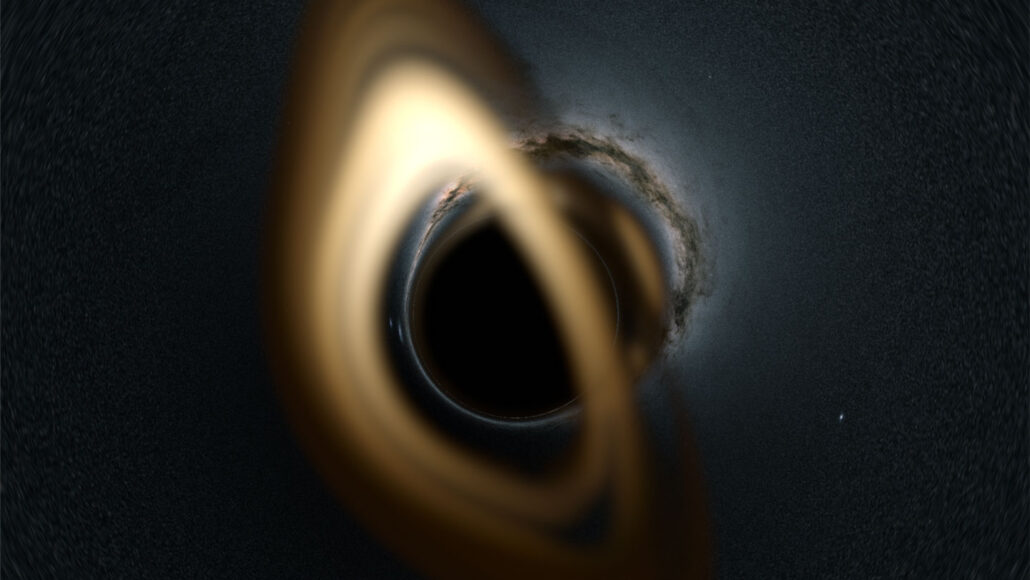Lisa Grossman writes:
The closest black hole yet found is just 1,560 light-years from Earth, a new study reports. The black hole, dubbed Gaia BH1, is about 10 times the mass of the sun and orbits a sunlike star.

Most known black holes steal and eat gas from massive companion stars. That gas forms a disk around the black hole and glows brightly in X-rays. But hungry black holes are not the most common ones in our galaxy. Far more numerous are the tranquil black holes that are not mid-meal, which astronomers have dreamed of finding for decades. Previous claims of finding such black holes have so far not held up (SN: 5/6/20; SN: 3/11/22).
So astrophysicist Kareem El-Badry and colleagues turned to newly released data from the Gaia spacecraft, which precisely maps the positions of billions of stars (SN: 6/13/22). A star orbiting a black hole at a safe distance won’t get eaten, but it will be pulled back and forth by the black hole’s gravity. Astronomers can detect the star’s motion and deduce the black hole’s presence.
Out of hundreds of thousands of stars that looked like they were tugged by an unseen object, just one seemed like a good black hole candidate. Follow-up observations with other telescopes support the black hole idea, the team reports November 2 in Monthly Notices of the Royal Astronomical Society.
Gaia BH1 is the nearest black hole to Earth ever discovered — the next closest is around 3,200 light-years away. But it’s probably not the closest that exists, or even the closest we’ll ever find. Astronomers think there are about 100 million black holes in the Milky Way, but almost all of them are invisible. “They’re just isolated, so we can’t see them,” says El-Badry, of the Harvard-Smithsonian Center for Astrophysics in Cambridge, Mass.
The next data release from Gaia is due out in 2025, and El-Badry expects it to bring more black hole bounty. “We think there are probably a lot that are closer,” he says. “Just finding one … suggests there are a bunch more to be found.”
Science News
It’s quite an achievement to find a quiescent black hole, not only because it’s black, or not radiating, but because it’s so small. A 10 solar-mass black hole would have a radius (out to its event horizon) of only 30 km. Many asteroids in our solar system are bigger than this. The distance to Gaia BH1 is about the same as the distance to the Orion Nebula.